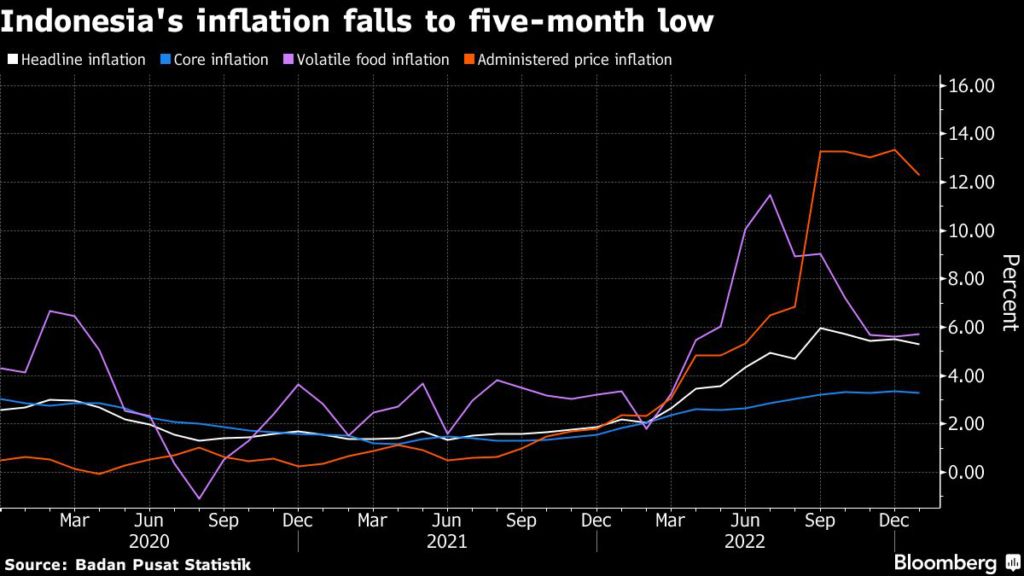Just as the pace of Indonesia’s economic growth returned to pre-pandemic levels, a slowing global economy has emerged as the biggest threat to sustaining that performance.
(Bloomberg) — Just as the pace of Indonesia’s economic growth returned to pre-pandemic levels, a slowing global economy has emerged as the biggest threat to sustaining that performance.
Data on Monday showed gross domestic product growth accelerated 5.31% last year, bringing Southeast Asia’s largest economy back to its pre-pandemic trajectory of about 5% annual growth. That was also the fastest pace since 2013 and was in line with the 5.3% median estimate in a Bloomberg survey.
The “impressive” pace of growth in 2022 was largely supported by domestic consumption, as Indonesia saw a rebound in mobility and tourism, Margo Yuwono, who heads the nation’s statistics agency, said in a briefing on Monday. This was further bolstered by exports, as the global commodity rally lifted prices of the key shipments like coal, palm oil, iron and steel, he said.
Although the official forecast is for growth to come in between 4.5% and 5.3% this year, mounting global risks mean the actual performance may be toward the midpoint, if not lower. Economists in a Bloomberg survey see 2023 growth slowing below the psychological 5% level to 4.9%.
Slowdown in some advanced economies is a key risk. Although the International Monetary Fund last month raised its forecast for the global economy for the first time in a year, growth in advanced nations is expected to remain weak, damping trade in emerging markets, especially Asia.
Looming Risks
Indonesia, the world’s largest exporter of palm oil, saw exports growth tapering in the final months of 2022. That suggests the economy is unlikely to see a repeat of 2022’s commodity windfall, which helped lift full-year exports to a record.
“Globally, high prices of Indonesia’s main export commodities supported trade performance last year,” Yuwono said. “However, global commodity prices are already in downward trend, hence will impact growth going forward.”
That’s in line with the Finance Ministry’s outlook that weakening global economic activity and higher interest rates may weigh down Indonesia this year.
The warning signs were apparent in the fourth-quarter figures, with GDP growth at its slowest pace in more than a year. While exports expanded 15% year-on-year, it was softer than the 19.4% jump in the July-September period. Consumption saw a similar softening to 4.5% from 5.4%.
Moderating growth means Bank Indonesia, which has increased borrowing costs by 225 basis points since August, may be on the verge of its last interest-rate increase when it meets later this month. Governor Perry Warjiyo last month indicated that risks from a slowing global economy likely outweigh challenges from inflation, as the central bank slowed the pace of its rate move to a quarter-point.
Headline inflation, which was above the central bank’s 2%-4% target for most of 2022 and likely weighed on consumption, is already showing signs of cooling as gains eased to 5.28% in January.
Here are other key points:
- The fastest-growing sectors last year were transport and warehousing (+20%); accommodations, food and beverage (+12%); and other services (+9.5%)
- Private consumption rose 4.93% in 2022, while exports and imports surged 16.3% and 14.8%, respectively
- Government consumption shrank 4.5% last year
–With assistance from Tomoko Sato, Yudith Ho, Norman Harsono and Soraya Permatasari.
(Recasts with full-year GDP numbers)
More stories like this are available on bloomberg.com
©2023 Bloomberg L.P.










